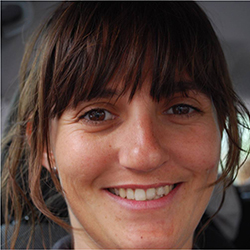The European Synchrotron Radiation Facility
The European Synchrotron Radiation Facility (ESRF) is one of the world’s largest synchrotron science centres. It is located at the European Photon & Neutron Science Campus in Grenoble, France. Backed by the international cooperation of 22 partner nations, of which 13 are Members and 9 are Scientific Associates, the ESRF hosts 9000 scientific user visits producing about 2000 publications per year. A portfolio of 44 specialised end-stations allows covering a broad variety of topics ranging from materials sciences over life sciences to medical applications. The ESRF is invested in fundamental science and in applied research, including a small percentage of proprietary research. Each end-station is also pursuing its own strong in-house research program. The use of synchrotron light has been in the last decades of crucial importance for the characterization of materials at the atomic-, nano-, and micro-scales leading to better understanding of their macroscale properties and tailor them into functional, effective materials. Hosting a multinational community of PhD students and postdoctoral fellows, the ESRF provides an open scientific environment with optimal conditions for international scientific collaborations. The ESRF has just finalized a 150M€ facility upgrade that included the installation of a new storage ring that delivers an X-ray source with an up to 100-fold increase in brilliance: The Extremely Brilliant Source (ESRF-EBS).
The beamlines at the ESRF cover all kinds of X-ray techniques for sample characterization including spectroscopy, diffraction and small angle scattering. The various techniques are used to obtain structural information down to the atomic scale, determine the electronic state of atoms in matter and study dynamics of atoms and electrons. They can be combined with imaging and temporal resolution to map spatial distribution and time evolution. Of particular interest are studies under in situ conditions in materials science where a functional material, e.g. a catalyst, is examined while an external stimulus triggers electronic and atomic structural changes. Ideally, the experimental conditions mimic the actual working environment of the material in the real world.
Beamlines ID26 and ID16B
Beamline ID26 specializes on photon-in/photon-out spectroscopy to study the atomic coordination and electronic structure element-selectively. The applications on ID26 cover many fields in natural sciences but the beamline has recently focus on operando studies in catalysis research. State-of-the-art instrumentation provides unique research opportunities. The beamline develops new instrumentation and analysis techniques that are combined with theoretical modelling of the electronic and atomic structure. ID16B is one of the most advanced synchrotron hard X-ray nanoprobe beamlines dedicated to X-ray nano-analysis. It offers a unique combination of 2D/3D techniques (spectroscopy, diffraction and phase contrast imaging) for a wide range of scientific disciplines from earth and environmental science to life science and materials science. Its highly flexible setup allows in situ and operando measurements.
Research Team
The two teams on ID26 and ID16B comprise each two scientists, two postdocs and PhD/MSc students. The teams will, within ECOMATES, host and supervise DC7 in collaboration with the University Grenoble Alpes.
 |
Pieter Glatzel is head of the electronic structure, magnetism and dynamics group and is leading the experimental station ID26. He is an expert for the application of X-ray spectroscopy for the study of electronic structure.
|
 |
Julie Villanova is leading the experimental station ID16B. Her team is composed of experts in materials science and X-ray nano-characterization.
|
Infrastructure
The beamlines are part of the ESRF experiments division that comprises a total of more than 40 beamlines and a sample environment unit for the development of in situ and operando cells. Support for engineering works, electronics and computing is provided by technicians and engineers in the instrument and infrastructure divisions. Software development for running the instruments, data reduction, analysis and interpretation is supported by computational engineers who have access to a powerful computing cluster. As part of the European Photon and Neutron campus, the ESRF has access to a number of sample characterization facilities.

